I grew up on an inlet of Lake Springfield. Recently I’ve heard it called Thompson Creek, though I just knew it as an extension of my front yard. I washed my hands in the murky water after making s’mores with cousins and my six siblings. When the lake froze enough, we walked on it.
My parents stored a couple of canoes and kayaks under an oak tree. I don’t recall ever learning to paddle; I just picked it up, so to speak. Dad stood in the canoe sometimes, which frightened me. But since he built a raft to float the Yukon with his brothers and friends — after bicycling across the country — his risk tolerance was higher than most.
I’ve spent a fair amount of time kayaking over the years, between summers working at a camp in Minnesota and wilderness hospitality jobs in Alaska. I paddle around a little lake near my parents’ farm most weekends, if the snakes don’t rattle me.
A year ago, I settled into a kayak blissfully only to find a serpent slithering toward me, disturbed from its proverbial sauna in the front of the boat. I shrieked, stuck my legs out of the kayak, and paddled furiously before diving headfirst onto the dock.
It was only a northern water snake, but it looked like a muddy copperhead to me, and — like Indiana Jones — I don’t care for snakes.
Still, when I heard the Springfield-Greene County Park Board offered intro to kayaking classes, I figured they checked the boats for creatures and that I could learn something. Like, how to paddle backward.
Want to try kayaking?
The Springfield-Greene County Park Board offers classes regularly. Although the Intro to Kayaking class is not held in July or August, due primarily to heat and risk of afternoon storms, a similar class called Float and Flight is available twice during July, as is a class called Kayaks and Coffee. Register online:
- July 14, 6 p.m. — Float and Flight
- July 20, 6 a.m. — Kayaks and Coffee
- July 28, 6 p.m. — Float and Flight
Classes are held weather permitting. My early June class was postponed due to rain in the forecast.
“We err on the side of caution with these beginner paddling experiences,” Justin Smith said. He’s the supervisor of Outdoor Initiatives. “You don’t want to mess with lightning on the open water, and strong winds are no fun for beginners.”
Learning a new trick and befriending a nuisance
After checking in with the office at the Lake Springfield Boathouse, I scanned a waiver and signed it, then followed the path to a blue awning by the lake.
Six of us, plus two instructors, pulled on life jackets. Per instruction, I tightened the straps so if I pulled up on the jacket it would stay in place.
Robin Barnes, outdoor recreation leader for the Park Board, handed out paddles. She held one out and described the blades.
“There’s a long side to the blade, and there’s a short side. That long side should be on the top,” she said.
Okay. I knew this.
“Here, it gets a little weird,” she said. She had us hold our paddles over our heads, with elbows bent.
“If your hands are too far out, you’re going to be leaning too far to one side or the other, and you could tip over. And if your hands are too close, you are going to tire yourselves out before we even get started.”
So, she had us form a “paddlers box” by bending our elbows so the paddle, our arms and the tops of our shoulders formed a square.
It had never crossed my mind.
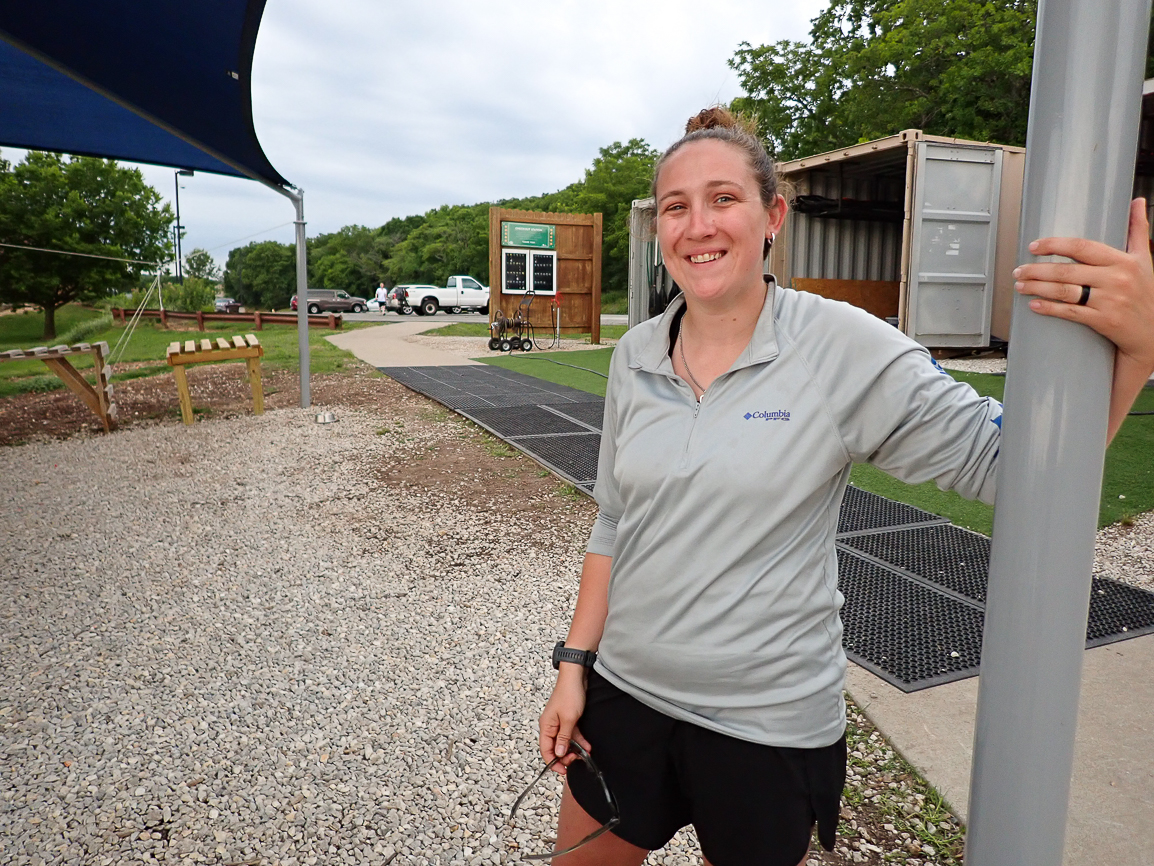
to students looking for help. (Photo: Mary Ellen Chiles)
Kelly Cowherd of Springfield joined the class to prepare for an upcoming church float trip.
“I’m just in a season where I want to get out more and I’d like to have functional fitness,” she said. “I don’t really like going to work out, but this will be movement.”
Barnes explained paddling, turning, slowing down — and a beaver slap:
“If you feel like you are about to tip, just slap the water with your paddle in the direction you’re going and it’ll pop you right back up,” Barnes said. “I know it’s weird, but it works.”
With that, we each grabbed a kayak and our instructors pushed us off the shore. Barnes led the way, with Jerome Brauner working as the sweep. He’s the recreation specialist for outdoor initiatives and on this day he paddled behind the group, keeping an eye on anyone struggling or wandering off.
I paddled slowly so I could coast among the lily pads.
“I could take photos of the lily pads all day,” I told Brauner.
“They’re quite invasive,” he said, mildly.
Turns out, they are actually American Lotus and they are considered “nuisances.”
“They definitely take over,” Barnes said later. “They’re very hard to get rid of because you have to get up every bit of root in order for them to not come back, and they’re floating on a long stem.”
Yes, but look how water gathers like mercury on the leaves.
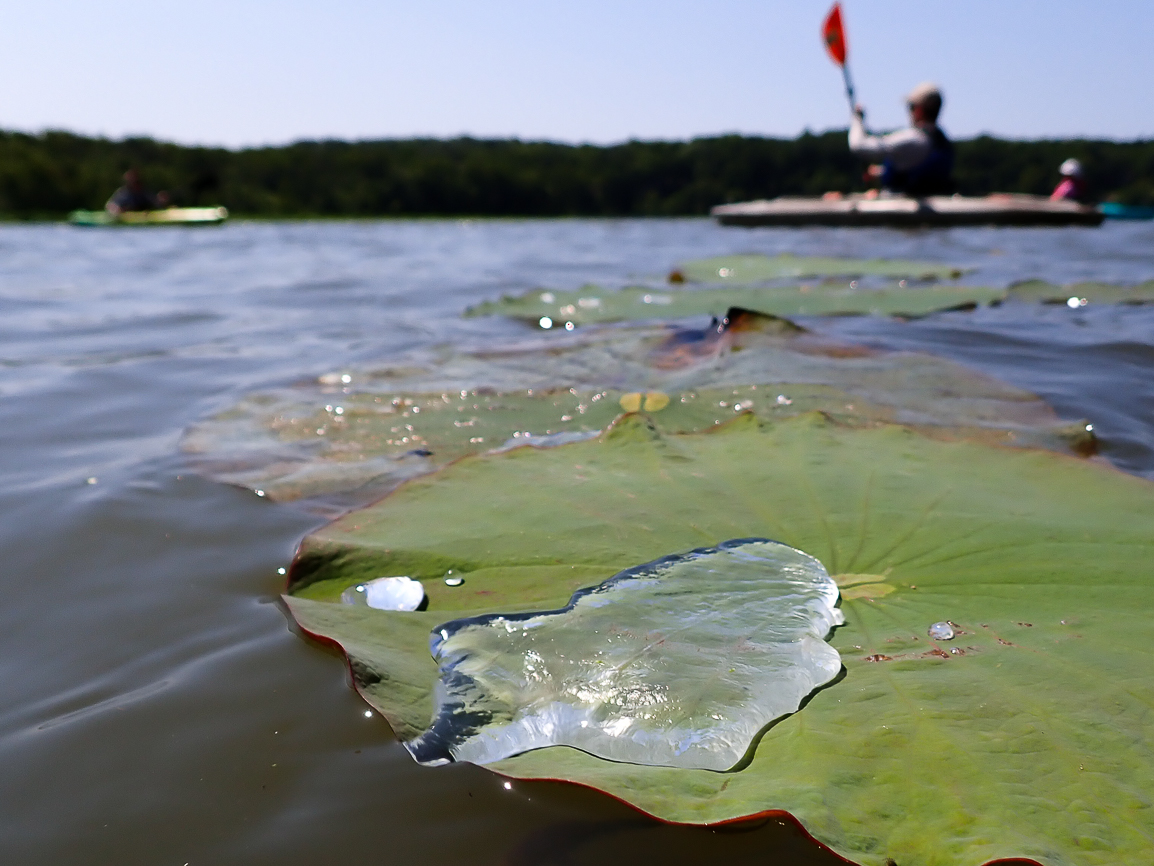
The bald cypress trees have grown, and so have I
I asked if Lake Springfield was always so murky.
“If we get a lot of rain it will turn up all the sediment at the bottom, and it’s also a very shallow lake,” Brauner said. “When a lot of people dip their paddles, it turns up the water pretty quickly.”
Smith estimates that it’s only 15-20 feet deep at most.
That might explain why I believed my brothers when they told me the Springfield Three were buried here.
A classmate told me her son had heard the same. He was 10.
A couple of blue herons swooped through and changed the subject.
Along with herons, geese and ducks, you might catch a glimpse of a pelican.
“The pelicans like to come here. It’s nice because we don’t allow any boats that have a motor bigger than six horsepower,” Barnes said.
You also may see eagles when it gets colder.
Ahead of us, a dozen girls paddled in canoes, two to a boat. They shrieked that they couldn’t do it, then they tried again. One of their supervisors told me they were from a KVC Missouri Residential program. A few minutes later, the kids splashed each other in something they called “Water Wars: Level 10.”
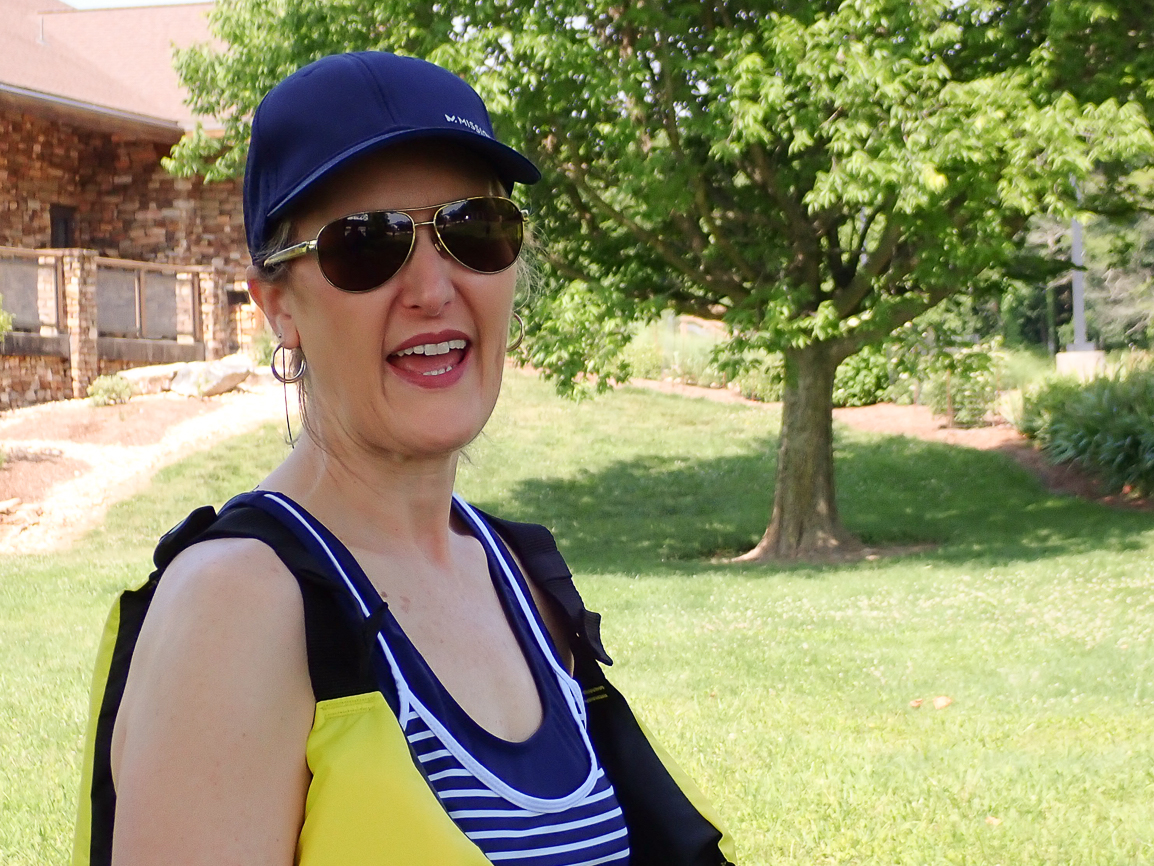
church float trip. (Photo: Mary Ellen Chiles)
Floating along, I forgot about trying to paddle backward. Instead, I asked a fisherman what he was looking for.
“Bass,” he said, and he insisted he’d caught some.
“In this heat? In this sun?” I asked. But he said that he had.
Then I caught a glimpse of a house on a hill. Old neighbors. Barnes said she lets her students paddle down this little inlet to give people a chance to rest in the shade, and practice turning.
I took off, hurrying to find my old home. This house is a lot bigger than it used to be and someone covered our sledding hills with decks and wooden stairs.
But I can still see the gray paint we applied to the house, and there’s the three-tiered sand box my dad made. There’s where I ran up the hill, geese nipping at my heels. And here, by the water, the bald cypress trees that now shoot up 40 feet into the sky — the little trees we planted when we were kids.
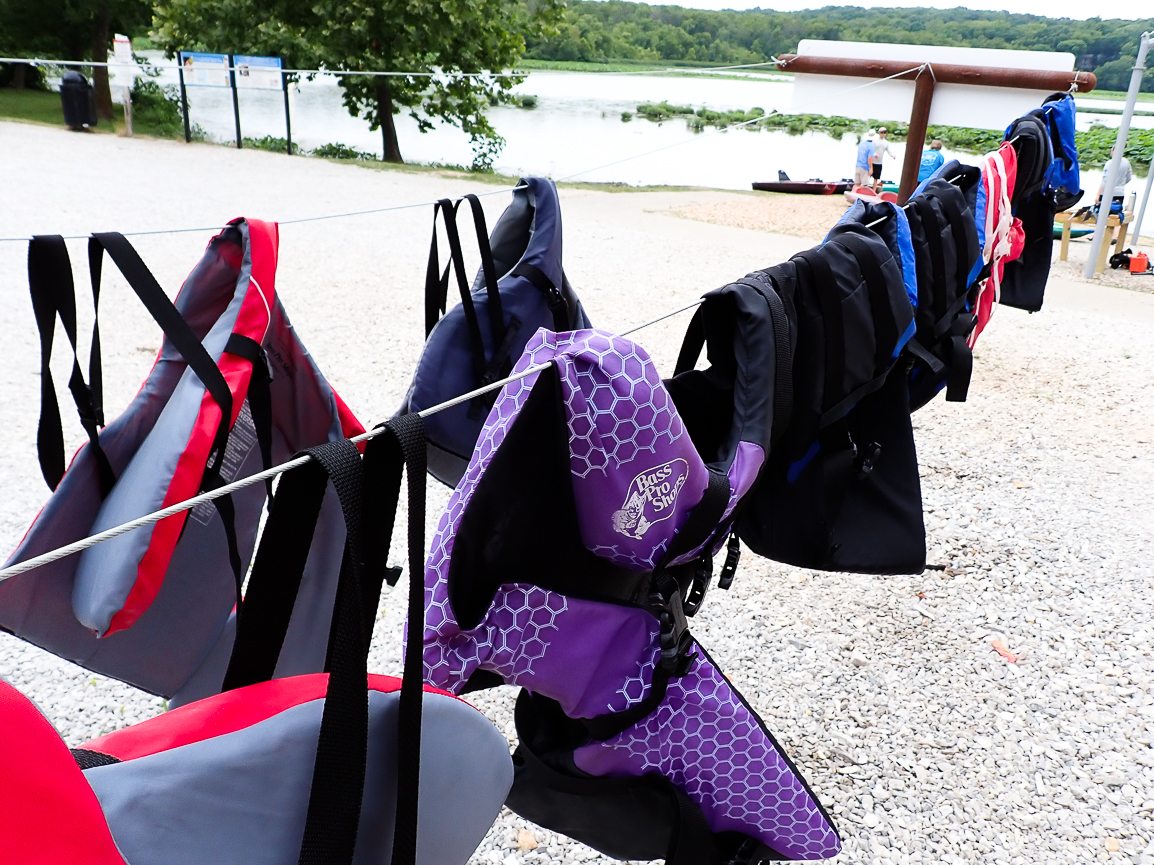
Staying safe on the water
Cowherd, my classmate, said she wasn’t totally new to kayaking but thought a class would be a good place to get some tips, like safety.
Brauner and Barnes had plenty of ideas. You can buy reflective stickers to add to a paddle so you can catch the glint of the sun. Bring a whistle and your ID. Of course, wear a life jacket, and make sure it’s Coast Guard-approved. Also, pick a vest that makes sense for your weight, and don’t lie.
“The weight range is about the buoyancy of the foam inside,” Brauner said. “If you have punctures in the nylon and the foam is exposed, it will deteriorate.”
You can buy a waterproof phone case at the boathouse. I brought my Olympus Tough 6 camera, which I bought after losing a GoPro in a small lake near my parents’ farm. I searched for 31 hours before taking a break, perhaps for good. For what it’s worth, the Olympus is much better in low light and shoots in RAW.
Intro to Kayaking class maxes at 12 students. We used Ascend D10 vessels, many of which were donated by Bass Pro Shops. These are “sit-in” kayaks.
“I’ve had a lot of people show up for intro classes and they’ll be like, ‘Oh, I was expecting the skirts,’ Barnes said. “But those are more for whitewater.”
“That’s not within our wheelhouse to teach,” Brauner said. “That instructor would need a lot of experience whitewater rafting and a lot of technical skills.”
Rest assured, the James River Water Trail does not have rapids. We floated for about a mile on its calm waters.
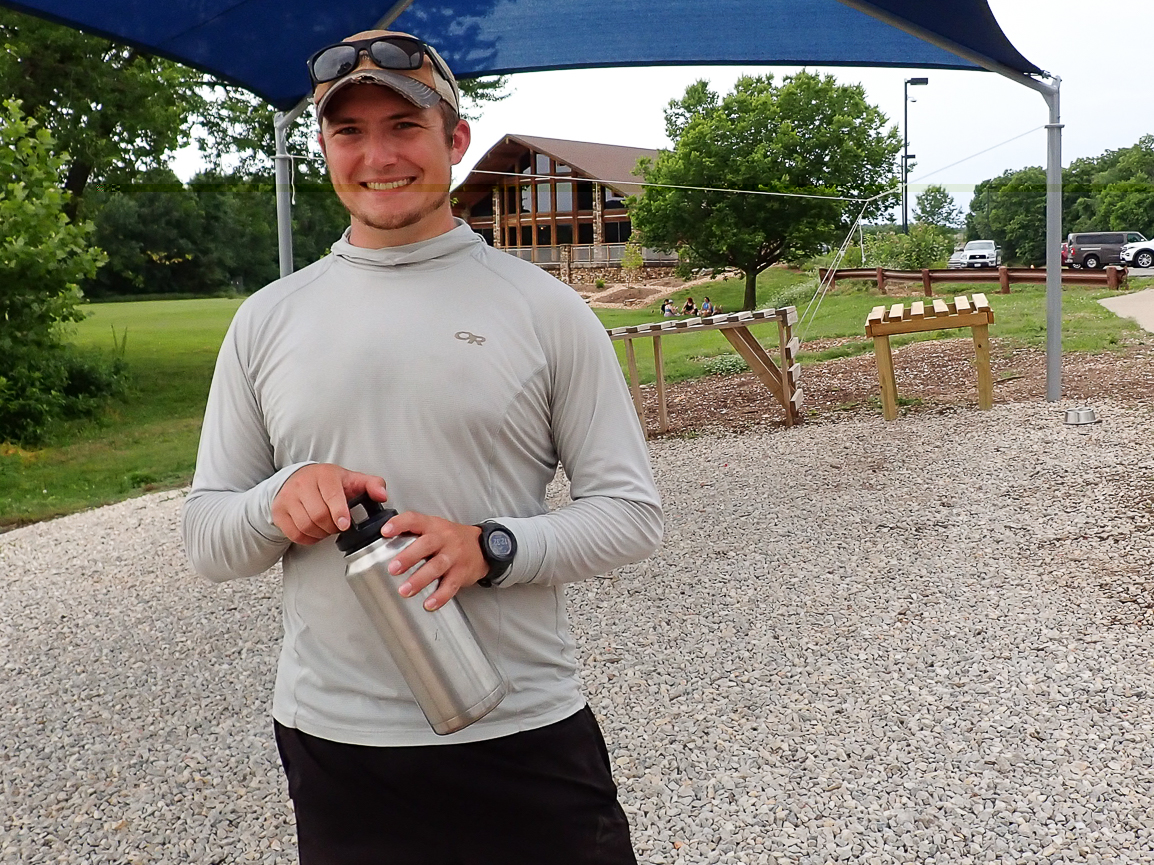
Classes normally last one and a half or two hours, though sometimes they go long.
“If they’re just having fun there’s no point in pulling them off early,” Barnes said.
Barnes has worked for the park board for nearly 9 years and Brauner for almost 5. They both teach a variety of outdoor skills classes, but their favorite part is getting people excited about going outside.
“It’s fun to watch them disconnect from the phone and connect — not only to nature but to connect to each other,” Brauner said.
Sometimes it even brings people back to peace. Barnes mentioned a student who’d been in a traumatic float trip accident but decided to take the class to face her fears.
“She was terrified to get out on the water. And I was like, ‘We’ll take it slow. We won’t make you stay out any longer than you want,’” Barnes said. “And we went way over there and we conquered fears, and she said she was going to come back out and rent a kayak herself.”


